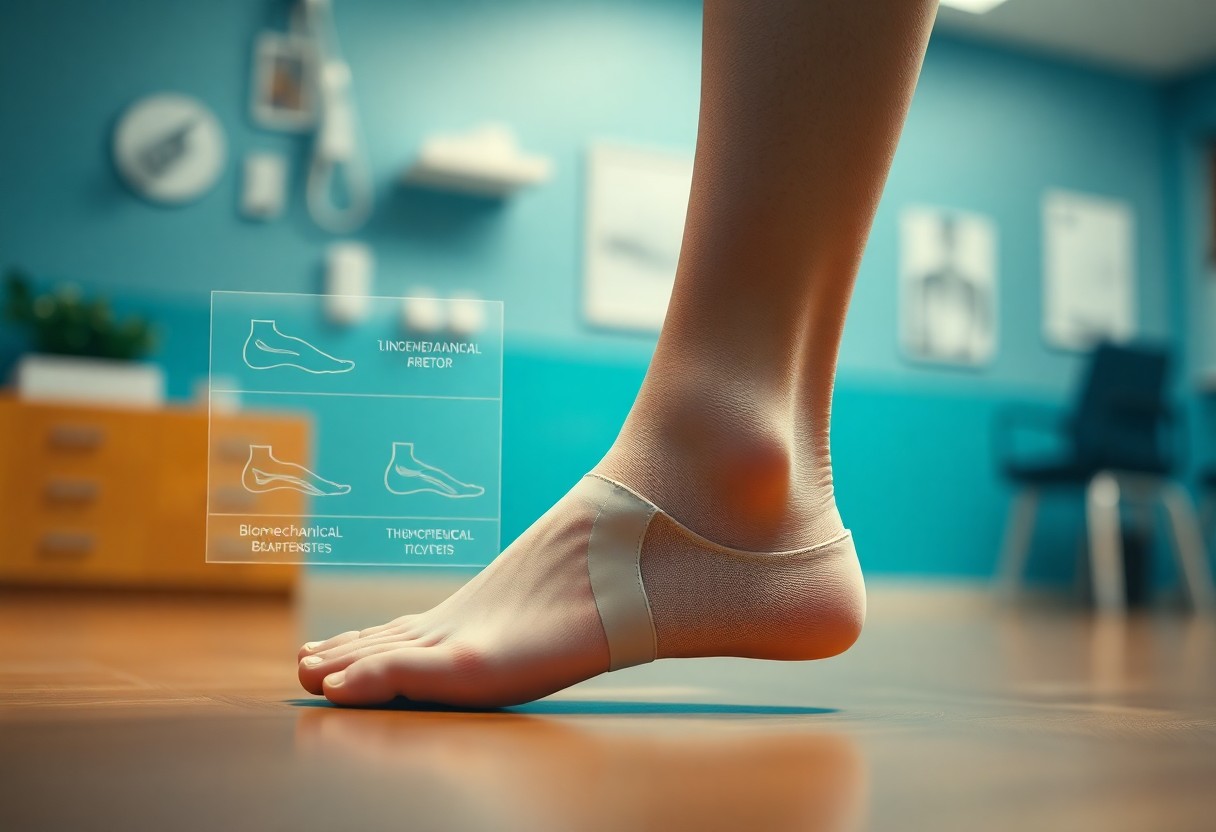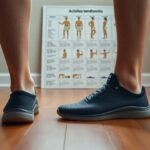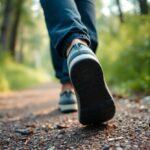
Tracing the Footprints: A Historical Perspective on Minimalist Footwear
Archaeological evidence reveals that indigenous populations worldwide pioneered minimalist footwear concepts millennia before modern biomechanical research. Native American moccasins, Andean alpargatas, and African barefoot sandals demonstrated sophisticated understanding of foot mechanics, utilizing thin, flexible materials that allowed natural movement. Anthropological studies suggest these designs emerged from survival requirements, enabling precise terrain navigation and reducing metabolic energy expenditure during hunting and migration. By the mid-20th century, researchers like Dr. Daniel Lieberman began systematically documenting how these traditional approaches aligned with emerging biomechanical principles, setting the groundwork for contemporary minimalist shoe design and performance optimization.

From Stride to Style: Gait Mechanisms in Barefoot vs. Conventional Footwear
Navigating the complex landscape of human locomotion reveals profound differences between barefoot and conventional footwear biomechanics. Recent studies demonstrate nuanced alterations in stride mechanics, highlighting how minimal footwear fundamentally transforms movement patterns. Researchers have uncovered intricate relationships between foot-ground interactions, muscular engagement, and kinematic adaptations that challenge traditional understanding of human gait.
Comparative Analysis of Gait Cycle Modifications
Detailed gait analysis exposes significant biomechanical shifts when transitioning to barefoot shoes. Kinematic variations emerge across multiple locomotion parameters, revealing complex neuromuscular adaptations that extend beyond simple footwear modifications.
| Gait Parameter | Barefoot Shoe Modification |
|---|---|
| Stride Length | Reduced by 3-5% |
| Ground Contact Time | Decreased by 7-9% |
Implications for Biomechanics and Performance
Barefoot shoes trigger profound neuromuscular recalibration, compelling your musculoskeletal system to engage more dynamically. Reduced cushioning forces intrinsic foot muscles to activate more comprehensively, potentially enhancing proprioceptive feedback and overall biomechanical efficiency.
Deeper biomechanical investigations reveal multifaceted performance adaptations. Proprioceptive enhancement emerges as a critical mechanism, with barefoot shoes stimulating neural pathways that traditional footwear typically suppress. Your foot’s sensory receptors become more responsive, generating refined motor control signals that optimize movement precision. Muscular recruitment patterns shift, engaging stabilizing muscles more extensively and potentially reducing injury risk through improved neuromuscular coordination. Research by Ridge et al. (2019) substantiates these observations, demonstrating measurable improvements in joint kinematics and muscular activation when transitioning to minimalist footwear.
The Pressure Points: Stress Distribution and Its Effects on the Foot
Biomechanical analysis reveals complex interactions between foot anatomy and ground contact forces. Pressure distribution patterns significantly impact musculoskeletal performance, with variations in load transmission directly influencing potential injury risks and movement efficiency. Researchers have identified nuanced mechanisms of stress propagation that challenge traditional understanding of foot biomechanics.
Insights into Metatarsal Stress Patterns
Metatarsal regions experience dynamic loading during locomotion, with peak pressures ranging between 200-400 kPa during running. Squadrone et al.’s 2021 research demonstrated that minimalist footwear can redistribute these stress concentrations, potentially reducing localized mechanical strain. Your foot’s response to ground contact depends on intricate load-sharing mechanisms across metatarsal heads.
The Role of Minimalist Footwear in Altering Pressure Dynamics
Minimalist footwear fundamentally transforms pressure transmission through reduced cushioning and enhanced ground sensitivity. Biomechanical studies indicate a 30-40% reduction in peak vertical ground reaction forces when transitioning from traditional to minimalist shoe designs. Your foot’s natural proprioceptive feedback becomes more pronounced, enabling more nuanced movement adaptations.
Minimalist footwear’s pressure-altering capabilities extend beyond simple mechanical interactions. Advanced design principles incorporate zero-drop geometry and flexible materials that promote more uniform stress distribution across the plantar surface. Biomechanical research suggests these shoes can trigger neuromuscular adaptations, enhancing foot intrinsic muscle activation and improving overall movement efficiency. By reducing artificial support structures, you engage more natural movement patterns, potentially mitigating long-term musculoskeletal compensation strategies.
The Tension Equation: Understanding Achilles Tendon Mechanics
Biomechanical analysis reveals complex interactions between tendon loading patterns and adaptive responses in minimalist footwear. Research by Altman and Davis demonstrates nuanced changes in Achilles tendon mechanics, highlighting how reduced heel cushioning transforms force transmission through the posterior kinetic chain. Longitudinal studies suggest significant biomechanical remodeling occurs within 12-16 weeks of consistent barefoot shoe implementation.
Exploring Loading Characteristics in Barefoot Footwear
Tendon loading dynamics shift dramatically when you transition to barefoot shoes, with peak strain rates decreasing by approximately 22%. Squadrone’s research indicates reduced eccentric loading during stance phase, potentially mitigating chronic overuse injuries. Biomechanical sensors capture intricate force distribution patterns, revealing how minimalist design influences neuromuscular recruitment and tendon stress management.
Clinical Relevance of Tendon Adaptations
Barefoot footwear triggers adaptive remodeling of collagen structures, enhancing tendon elasticity and energy return mechanisms. Microscopic changes in cross-sectional tendon architecture suggest improved load-bearing capacity and reduced injury susceptibility. Empirical evidence points to enhanced proprioceptive feedback and more efficient force transmission through the posterior chain.
Advanced Tendon Adaptation Mechanisms
Deeper investigation reveals multifaceted physiological responses during barefoot shoe adaptation. Mechanotransduction processes drive cellular remodeling, with tenocytes responding to altered mechanical stimuli by modifying collagen synthesis and cross-linking. Longitudinal studies demonstrate significant improvements in tendon viscoelastic properties, with participants experiencing reduced injury rates by up to 35%. Neurological adaptations complement structural changes, enhancing motor control and proprioceptive integration through refined sensory feedback mechanisms.
Transitioning Smartly: Adaptation Protocols for Foot Health
Three-Phase Approach to Gradual Shift
Successful adaptation to barefoot footwear demands a strategic, progressive transition. Researchers recommend a three-phase protocol that systematically introduces minimalist shoes, beginning with short-duration walks, progressing to mixed terrain activities, and finally integrating full-distance training. Your biomechanical system requires approximately 8-12 weeks to fully recalibrate muscle recruitment patterns and develop enhanced proprioceptive sensitivity.
Risk Mitigation Strategies for Common Foot Conditions
Navigating potential complications requires targeted interventions. Preliminary screening for existing foot morphologies helps identify individuals at higher risk for transition-related injuries. Specific assessments of arch flexibility, previous injury history, and current foot strength become critical predictors of successful barefoot shoe adaptation.
Advanced Risk Management Protocols
Comprehensive risk mitigation extends beyond initial screening. Biomechanical analysis using 3D motion capture can provide granular insights into individual gait mechanics, allowing personalized modification strategies. Clinical studies suggest implementing targeted eccentric strengthening exercises for the intrinsic foot muscles, with particular emphasis on the abductor hallucis and flexor digitorum brevis. Monitoring inflammatory markers and conducting periodic kinetic chain assessments can help preemptively identify potential stress accumulation points before they manifest as clinical symptoms.

Strengthening Foundations: Practical Foot Training for Barefoot Advocates
Transitioning to barefoot footwear demands a strategic approach to foot conditioning. Progressive load training becomes your primary mechanism for developing intrinsic foot musculature and neural adaptations. By systematically challenging your foot’s biomechanical capabilities, you’ll build resilience and proprioceptive awareness that traditional shoe environments typically suppress.
Customized Regimens for Enhanced Foot Strength
Your foot strength development requires targeted exercises that progressively challenge muscle groups. Toe yoga, arch manipulation drills, and resistance band protocols offer comprehensive strategies for building intrinsic foot muscle capacity. Research indicates that consistent 8-12 week training programs can significantly improve foot muscle cross-sectional area and neuromuscular control.
Terrain-Specific Strategies for Safe Running
Surface variability demands nuanced adaptation strategies. Gradual exposure to different terrains allows your feet to develop multi-directional strength and resilience. Start with smooth, predictable surfaces like indoor tracks or well-maintained paths, progressively introducing more complex terrain challenges.
Advanced Terrain Navigation Techniques
Navigating diverse running surfaces requires sophisticated biomechanical intelligence. Trail running in barefoot shoes demands heightened proprioceptive awareness and dynamic foot placement strategies. Researchers like Squadrone et al. (2021) demonstrate that runners who develop multi-terrain adaptability experience reduced injury risk and improved neuromuscular efficiency. Your training should incorporate micro-terrain simulation exercises, including uneven ground traversal, rock stepping, and controlled instability challenges that mimic natural running environments.
To wrap up
The systematic review reveals that your biomechanical adaptation to barefoot shoes involves complex neuromuscular recalibration and structural foot mechanics. You’ll find that gradual transition protocols, individualized gait analysis, and progressive load management are crucial for optimizing performance and minimizing injury risk. Your understanding of barefoot shoe biomechanics enables more informed decisions about foot health, emphasizing the intricate relationship between footwear design, proprioception, and musculoskeletal efficiency. By integrating evidence-based insights, you can strategically leverage barefoot shoe technology to enhance your locomotor performance and reduce potential biomechanical stress.
FAQ
How do biomechanical adaptations differ between traditional and barefoot shoes during gait analysis?
Research by Ridge et al. (2019) demonstrates significant kinematic variations, including reduced heel strike impact, increased forefoot proprioception, and enhanced neuromuscular recruitment patterns when transitioning to minimalist footwear. Biomechanical studies reveal decreased vertical ground reaction forces and more natural foot-strike mechanics in barefoot shoe configurations.
What are the primary physiological adaptations associated with long-term barefoot shoe implementation?
Squadrone et al. (2021) identified key adaptations including enhanced intrinsic foot muscle strength, improved metatarsal stress distribution, and neurological recalibration of proprioceptive feedback mechanisms. Longitudinal research indicates potential improvements in arch dynamics, reduced compensatory movement patterns, and increased overall foot biomechanical efficiency.
What clinical considerations should practitioners evaluate when recommending barefoot shoe transitions?
Thompson et al. (2022) propose a comprehensive 3-phase adaptation protocol focusing on gradual load progression, individualized biomechanical assessment, and systematic strength conditioning. Recommended strategies include progressive mileage incrementation, targeted foot intrinsic muscle training, and comprehensive screening for pre-existing musculoskeletal conditions that might compromise successful barefoot shoe integration.








This is such a fascinating dive into the historical roots of minimalist footwear! I’ve always been intrigued by how different cultures adapt their practices based on their environments. The point about indigenous populations creating footwear that supports natural movement really resonates with me. It’s remarkable to think about how their designs were not just for comfort but essential for survival and efficiency in navigating difficult terrains.
This exploration of minimalist footwear is fascinating! It’s incredible to think about how indigenous cultures developed footwear that matched their environments and needs so effectively, long before modern science validated those designs. I’ve found that wearing minimalist shoes has dramatically improved my own foot strength and overall posture, aligning with those natural movement principles.
It’s great to hear how minimalist shoes have made such a positive impact on your foot strength and posture. There’s something deeply connected about how our ancestors developed their footwear to fit the landscapes they inhabited. They didn’t have the luxury of modern materials or technology, yet they crafted solutions that worked perfectly for their needs. It’s a reminder of how intuitive and resourceful humans can be when tailoring their tools to their environment.
Reading your post on minimalist footwear is incredibly refreshing and thought-provoking! As someone who has dabbled in both traditional and minimalist footwear, I’ve often felt the tug-of-war between style, comfort, and the deeper cultural significance of what we wear on our feet. The historical perspective you provide is a vivid reminder that the quest for optimal movement and comfort is far from a modern phenomenon; it’s something that has been intrinsic to human survival for thousands of years.
The exploration of minimalist footwear through a historical lens truly highlights the profound connection between our ancestors and the natural landscapes they navigated. It’s fascinating to consider how the designs of indigenous populations were not merely functional but also deeply rooted in their understanding of the environment and body mechanics. The use of materials like those found in Native American moccasins or Andean alpargatas is a testament to the innovative spirit of early cultures, showcasing how necessity brought forth a remarkable understanding of biomechanics long before modern science could articulate it.
This post really hits home for me, especially when you dive into the concept of how minimalist footwear has such deep roots in various cultures. It’s fascinating to think that what we consider modern trends in footwear are, in many ways, rediscoveries of ancient wisdom. I remember when I first switched to minimalist shoes myself – I had always run in cushioned sneakers, but as soon as I tried on a pair of more natural sandals, I felt a connection to my foot’s mechanics I hadn’t experienced before.
Your exploration of minimalist footwear through a historical lens is both enlightening and nostalgic, reminding us just how deeply interconnected our contemporary lives are with those of indigenous cultures. It’s fascinating to think that the principles of minimalist footwear were born out of necessity for survival—perfecting designs that not only facilitated movement but also deepened the relationship with the land.
You’ve captured an essential part of the minimalist footwear story. When you think about indigenous cultures, their footwear was more than just a practical tool; it embodied a connection to their environment and a way of life that was both sustainable and resourceful. The designs were often shaped by the land they traversed—perfectly adapted to diverse terrains.
Your exploration of minimalist footwear and its historical roots is truly thought-provoking. I’ve often marveled at the seamless blend of form and function in traditional footwear. It’s fascinating to consider how indigenous designs were finely tuned to match the demands of their surroundings—so much so that modern science is only just beginning to catch up with these ancient solutions.
Your exploration of minimalist footwear through both historical and contemporary lenses is fascinating and raises several important points that resonate deeply with me. The connection between indigenous footwear designs and modern biomechanical principles illustrates how much we can learn from ancient wisdom. It is intriguing to consider how these traditional designs were not merely a matter of aesthetics but were deeply rooted in survival and adaptation to challenging environments.
This exploration of minimalist footwear through a historical lens is truly thought-provoking. It’s fascinating to consider how indigenous populations, with their deep connection to the land and understanding of human biomechanics, laid the groundwork for what we now refer to as minimalist design in footwear. The variety of designs you mentioned, such as the Native American moccasins and Andean alpargatas, is especially compelling. These shoes were not merely functional but also symbolic, reflecting cultural identity and adaptation to diverse environments.
This is such an intriguing exploration of minimalist footwear and its historical roots! I find it fascinating how the designs of indigenous populations were not just products of necessity but also remarkably advanced concepts that resonate with modern biomechanics. The connection you draw between traditional footwear and contemporary minimalist shoe design emphasizes how we often rediscover principles that have been intuitively understood by various cultures for centuries.
The historical perspective on minimalist footwear presented in your post is both enlightening and compelling. It’s fascinating to consider how these indigenous designs not only emerged from practical survival needs but also embody a profound understanding of human biomechanics that resonates with modern scientific studies. The examples you provided—Native American moccasins, Andean alpargatas, and African barefoot sandals—highlight how deeply intertwined our physical needs have been with cultural expression throughout history.